Bold Sustainable Ingredients
We would love to provide you with more detailed information regarding the medicinal uses of all our botanicals, however, we are highly restricted by regulatory agencies in what we can say (so much so that we can’t even name the agencies). We encourage you to go to PubMed or other sites to look up the many peer-reviewed studies conducted on these amazing, wondrous plants.
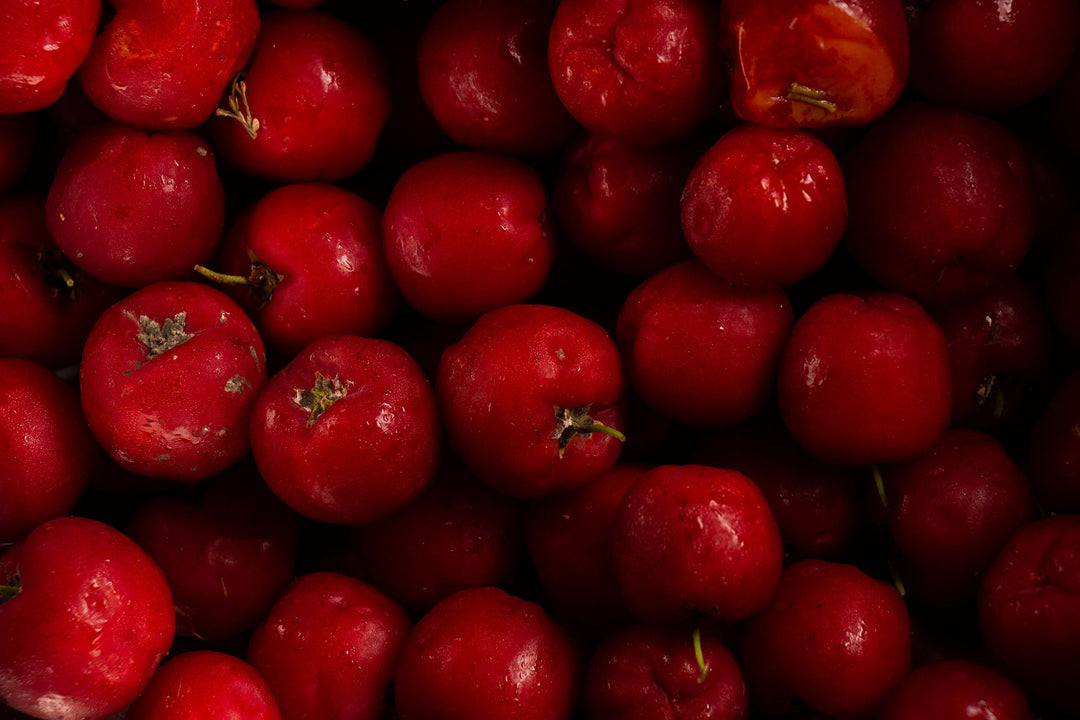
Acerola Cherry
Latin name: Malpighia glabra
Plant family: Malpighiaceae
Other common names used: Barbados Cherry, West Indian Cherry, Wild Crepe myrtle
Parts used: Fruit
Primary constituents: A very rich source of Vitamin C (ascorbic acid) and other organic acids, carotenoids, and bioflavonoids as well as several vitamins and minerals. Two anthocyanin flavonoids along with quercetin are all present in Acerola fruit.
Acerola is a wild evergreen shrub producing bright red fruit that grows in tropical and subtropical zones originating from southern Mexico, Central America, and northern South America. Acerola juice is a popular drink in Brazil and its properties are considered to be cooling and astringent and it has been acknowledged as one of the richest natural sources of ascorbic acid (Vitamin C). The fruit contains an exorbitant amount of ascorbic acid, around 50–100 times that of orange or lemon. Some consider Acerola to be a Superfruit largely due to its high antioxidant potency and values.
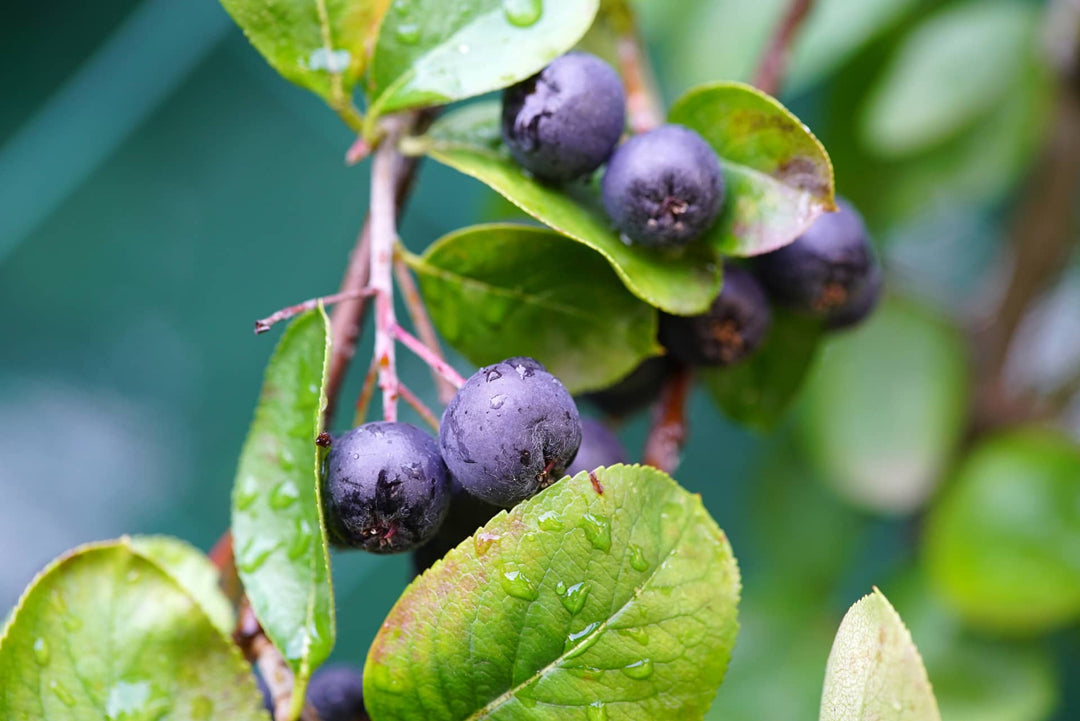
Aronia Berry
Latin name: Aronia melanocarpa
Plant family: Rosaceae
Other common names used: Black Chokeberry
Parts used: Fruit
Primary constituents: Acids and phenolic acids (vitamin C/ascorbic acid, caffeic acid), polyphenols including anthocyanins – at least 5, and flavanols (quercetin 3-O-galactoside, quercetin 3-O-glucoside)
The Aronia or Black Chokeberry shrub is native to North America and was used traditionally by Potawatomi Native Americans as a tea to support the immune system. Aronia was introduced and has been cultivated for decades in Russia, Eastern Europe, and Asia where it is often used for juice, wine and preserve production. The hardy deciduous shrub produces white flowers in the spring and a deep dark purple fruit in the fall. Aronia berries have very high levels of polyphenolic compounds, or flavonoids, including anthocyanins and proanthocyanidins, which have been linked to a wide range of possible health benefits. These potent flavonoids in Aronia berries contain approximately three times more antioxidant capacity than that of blueberries.
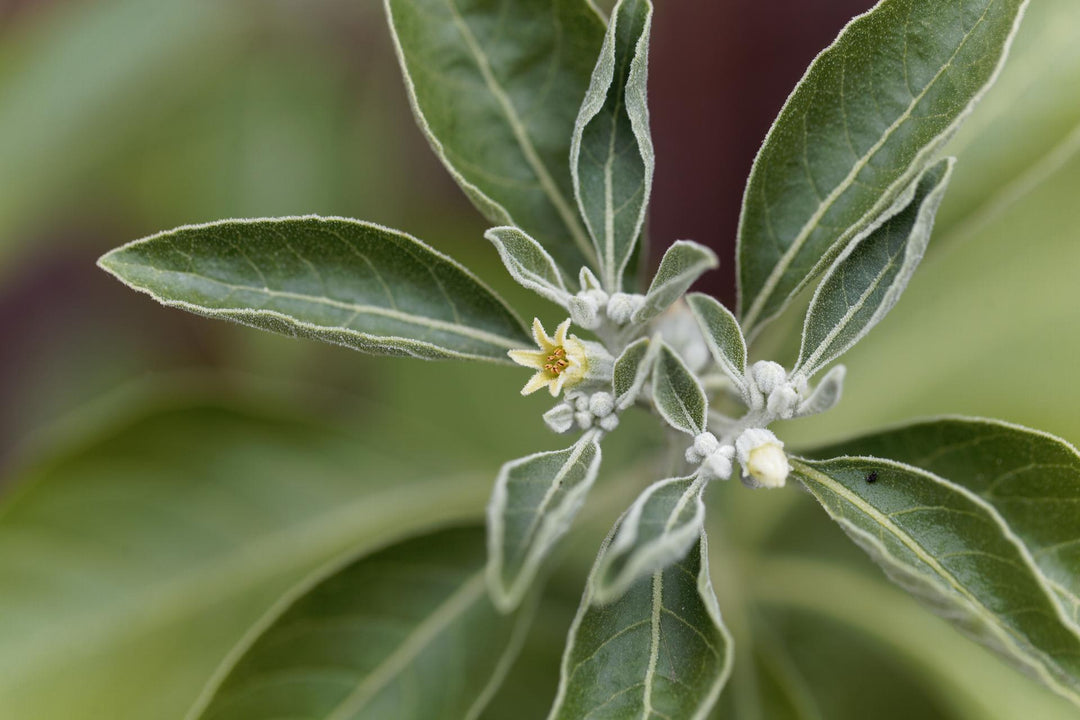
Ashwagandha Root
Latin name: Withania somnifera
Plant family: Solanaceae
Other common names used: Winter Cherry, Indian Ginseng
Parts used: most commonly the root (leaf is also used)
Primary constituents: Alkaloids (anaferine, ashwagandhine, isopelletierine, withasomnine, withaninine, and others), steroidal lactones (35 withanolides A-Y, and withaferins), and saponins (such as sitoindoside VII and VIII).
Ashwagandha has a long rich history of use in Classical Ayurveda from India for approximately 4,000 years. One of the most revered herbs in Ayurveda, it is considered a Rasayana and has been traditionally used to support health, energy, youthful vigor, and fertility. Ashwagandha is a Sanskrit word that roughly translates as that which gives the smell of a horse, inferring that it can help one perform with the strength of a horse. In modern herbalism, it is considered to be an adaptogen, a substance that facilitates the body's ability to respond to stress and balance body functions. A small woody shrub, it is a native of Southern Asia and is commercially cultivated in India.
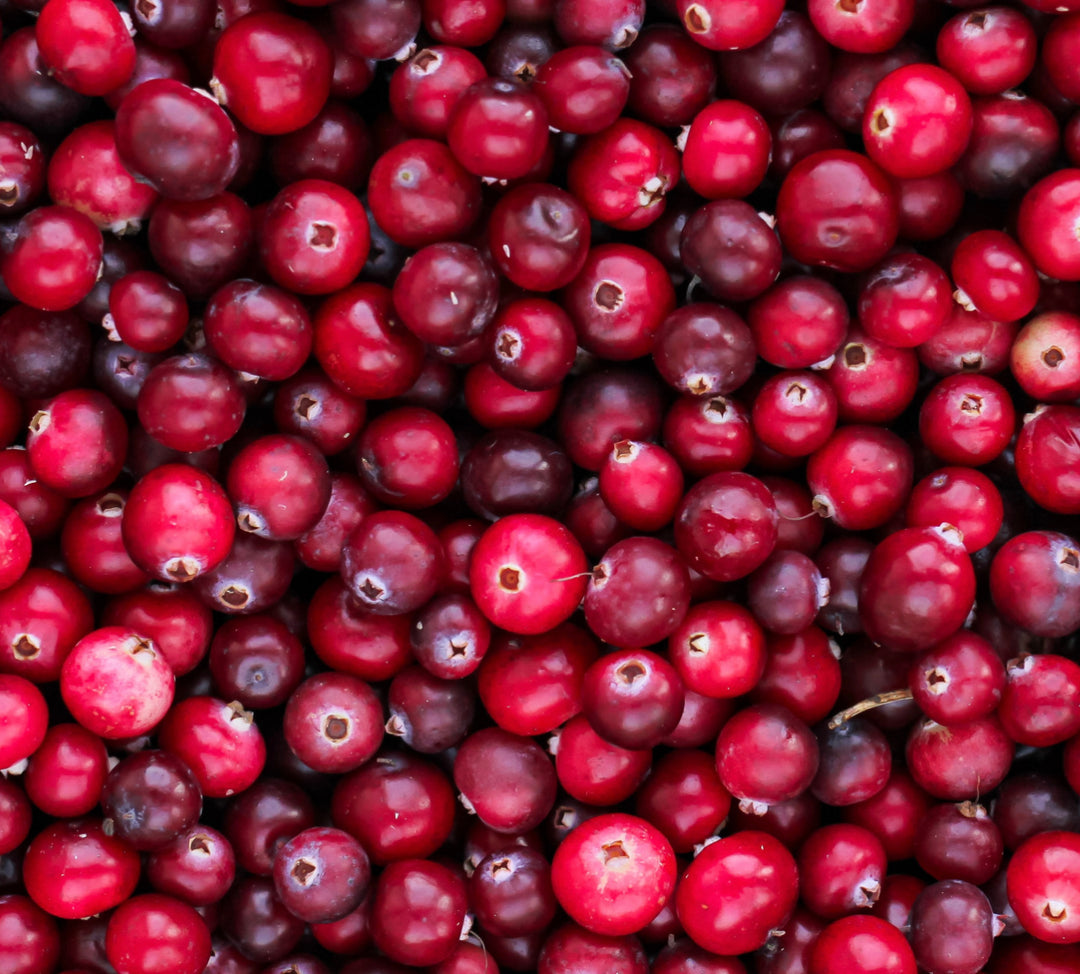
Cranberry
Latin name: (Vaccinium macrocarpon)
Plant family: Ericaceae
Other common names used: American Cranberry
Parts used: Berry/Fruit
Primary constituents: organic acids, quercetin, sterols, terpenes and polyphenolic compounds, including A-type proanthocyanidins
The cranberry plant is a small evergreen shrub that is related to the blueberry and likes to grow in near sandy peat bogs and swampy marshes, preferring poor acidic soil. Commercially they are not grown in water, but the fields are intentionally flooded during harvest since the berries float and that makes collection easier. The cranberry is native to North America and Native Americans would use the cranberry as a meat curative, as a poultice to help cure wounds and as a fabric dye. Energetically, Cranberries are exceptionally tart, sour and very astringent to taste in their fresh state and sweeten slightly when dried. Cranberries have some of the most potent antioxidants of any commonly available berries that have been studied in depth; one study found that out of 20 common fruits, cranberries have the highest level of phenols. This gives cranberry status as a superfood. Phenols or phenolic acids, a type of antioxidant, are compounds that are protective to many aspects of human health. Research has shown that a compound found specifically in Cranberry, A-type proanthocyanidins, enhance what is known as “AAA” or “anti-adherence activity” in the lining of the urinary tract. This helps support a healthy urinary tract system. These same A-type proanthocyanidins may also help support oral, gut, and cardiovascular health.
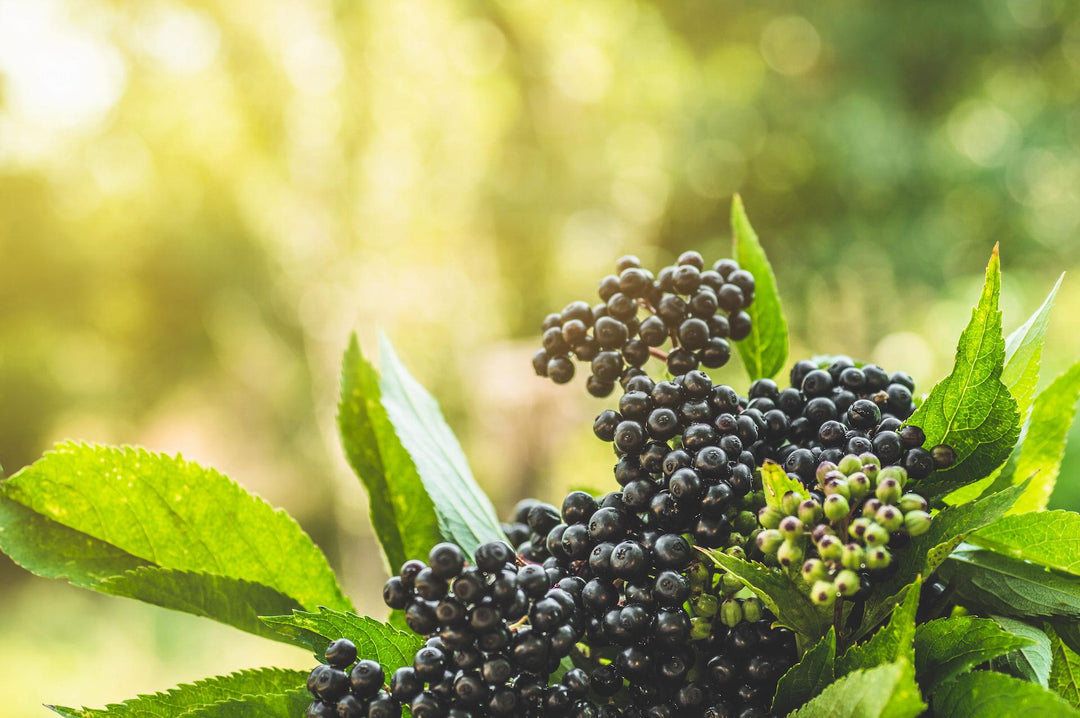
Elderberry
Latin name: Sambucus nigra
Plant family: Adoxaceae (or Moschatel Family)
Other common names used: European Elder, Black Elderberry, Common Elder
Parts used: Ripe berries (leaves and flowers are also used)
Primary constituents: Vitamin C (ascorbic acid), flavonoids including quercetin, and 4 anthocyanins (cyaniding-3-O-sambubioside-5-O-glucoside, cyaniding-3,5-di-O-glucoside, cyanidin-3-O-sambubioside, and cyanidin-3-O-glucoside), citric and malic acid.
The legendary European Elder has been valued traditionally for centuries by Native Americans and herbalists in Europe and has been referred to as the “medicine chest of the people.” As far back as 400 BCE, its virtues have been extolled by Hippocrates, Dioscorides, Pliny, Hildegard von Bingen, and others. Native to Europe, North Africa, West Asia, and naturalized in North America, Elderberry is a deciduous tree that produces shiny black berries that have been found to contain abundant levels of polyphenols, anthocyanins, and flavonoids, all known for antioxidant bioactivity. Wildcrafted and commercially cultivated in Europe, the Haschberg variety of Austria is the leading cultivar and has been the subject of recent studies on its use as immune support. Our Elderberry is derived from the Haschberg variety, sourced from certified organic growers, and is thoroughly tested to ensure that no adulterants are present using both HPLC testing/fingerprinting as well as DNA authentication.
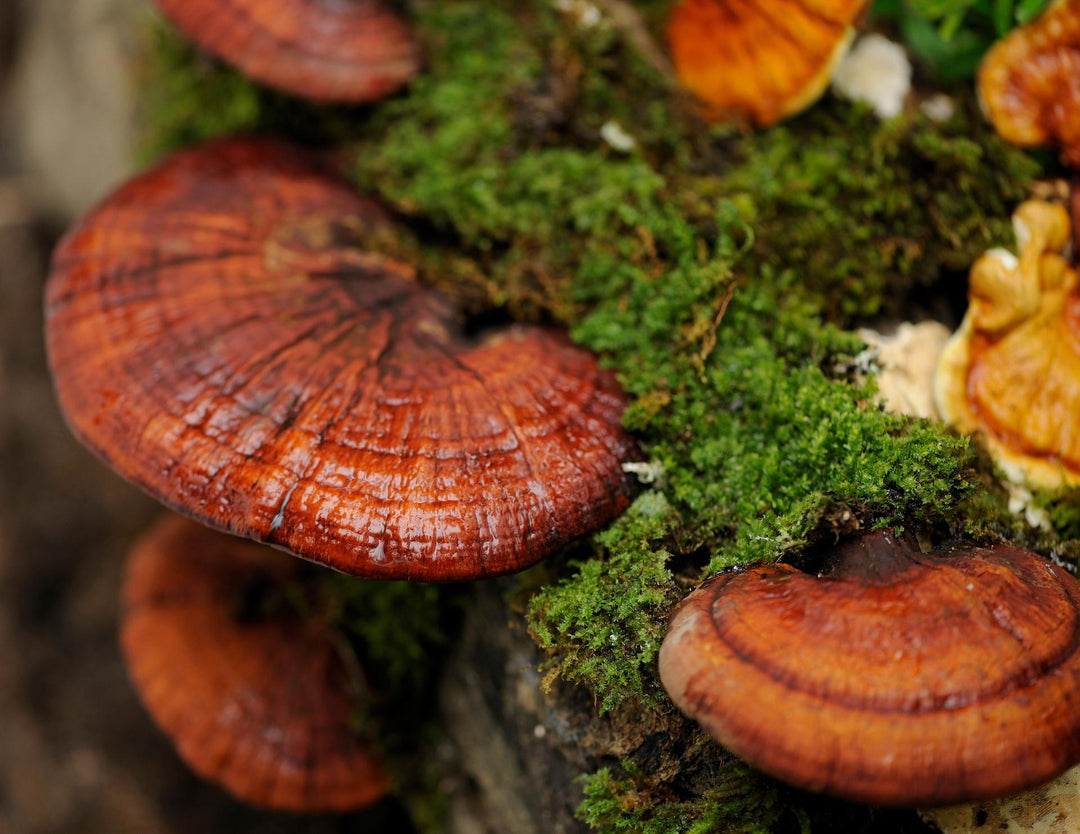
Reishi Mushroom
Latin name: Ganoderma lucidum
Plant family: Ganodermataceae
Other common names used: Ling Zhi, Hong ling zhi
Parts used: Fruiting body
Primary constituents: Polysaccharides, specifically beta-1,3/ 1,6 -glucans, and triterpenoids (including lucidenic acid as well as ganoderic acids), alkaloids, and sterols.
One of the oldest known medicinal mushrooms, Reishi has been cherished in China and Japan for over 2,000 years. The earliest mention of Reishi is around 221 B.C. in China where it has long been immortalized in art and literature and treasured for its medicinal value. Early texts observed its use to promote health, vigor, vitality, and longevity. Taoists viewed it as an “elixir of eternal youth.” Reishi mushroom is distinctive as a large, dark mushroom with a hard, woody texture and a glossy finish; the Latin lucidius refers to its “shiny” surface. In the wild, Reishi grows on a variety of dead or dying trees and has traditionally been prepared as a hot water decoction to access its medicinal qualities from the hard dense material. In China they have been cultivating Reishi for 800 years and more recently, since the ‘70s, it has been commercially cultivated in shadehouses on wood log, saw dust, and other substrates.









